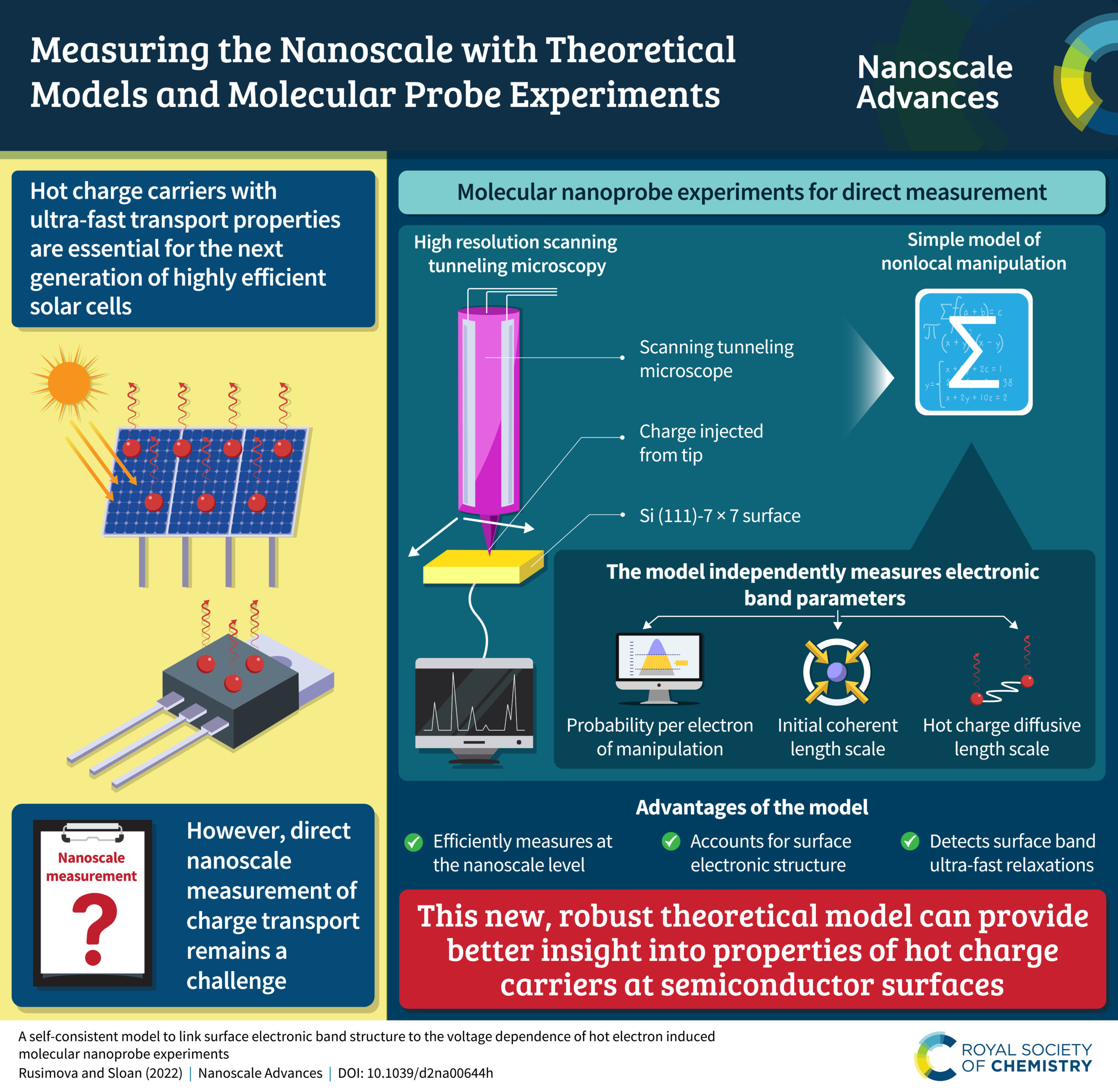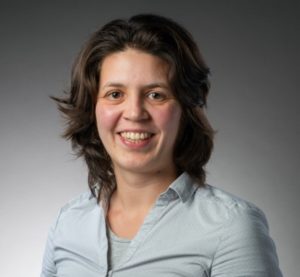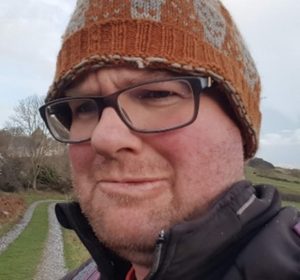An infographic depicting a new model for investigating the properties of hot charge carriers at semiconductor surfaces
Peter A. Sloan and Kristina R. Rusimova
Nanoscale Adv., 2022,4, 4880-4885, DOI: 10.1039/D2NA00644H
Meet the authors
Dr Kristina R. Rusimova obtained her PhD in atomic manipulation with the scanning tunnelling microscope from the University of Bath in 2016. Following a short postdoctoral position in photonics, she joined the Department of Physics at the University of Bath as an independent Prize Fellow in 2018 and as a tenured Lecturer (Assistant Professor) in 2021. In 2022 she was part of the team awarded the Royal Society of Chemistry’s Faraday Division Horizon Prize for the discovery of chiroptical harmonic scattering. Her research interests include single molecule manipulation, quantum optics, advanced materials, and speciality optical fibres.
Dr Peter A. Sloan received an undergraduate Masters degree in Chemical Physics from the University of Edinburgh in 1999 and a PhD from the University of Birmingham in 2004. He was a Royal Society (International Outgoing) Fellow 2004-2005 in the group of Nobel Laureate Prof John C. Polanyi at the University of Toronto. He gained an independent Lectureship (Assistant Professor) position at the University of Bath in 2010 and was promoted to Senior Lecturer (Associate Professor) in 2016. Peter’s research has focused on using atomic manipulation with an STM to measure and uncover the physics of hot-electrons at semi-conductor surfaces. He is also a founder and the overall Director of the Bath Physics Observatory.
What aspect of your work are you most excited about at the moment and what do you find most challenging about your research?
- Dr Peter Sloan: Our work has the chance to show that state-of-the-art atomic manipulation can be used to help real-world problems. The most challenging aspect is learning how to make true measurement of what we’re after, rather than say having the influence of the arbitrary experimental parameters or limitations of the apparatus muddy the waters.
- Dr Kristina Rusimova: Experimental automation has been the backbone for most of our recent scientific breakthroughs. I am excited about the prospect of opening up our automation protocols to the scanning probe microscopy community worldwide through open source software and combining them with machine learning algorithms, which could push surface science to an entirely new level.
How do you feel about Nanoscale Advances as a place to publish research on this topic?
- Dr Peter Sloan: Nanoscale Advances is a fantastic place to publish. It is highly regarded, fast reviewing and we had some of the best, most fair, and rigorous reports we’ve had.
- Dr Kristina Rusimova: The submission and review process have been smooth, efficient, and rigorous. Nanoscale Advances has a well-established portfolio of scanning probe microscopy research, and our paper sits nicely within it.
Can you share one piece of career-related advice or wisdom with other early career scientists?
- Dr Peter Sloan: Work with good people. Have a work-life balance rather than think you have a work-life balance.
- Dr Kristina Rusimova: Don’t be scared of rejection and learn how (and when) to say “no”. Have fun with your science.













